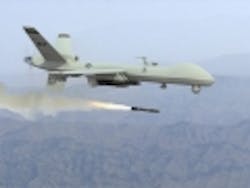Infrared Search and Track Sensor (IRST) system hits development milestone
Posted by John McHaleST. LOUIS, July 23, 2011 Navy officials have given the green light to Boeing [NYSE: BA] and Lockheed Martin [NYSE: LMT] engineers to continue developing the Infrared Search and Track (IRST) system for F/A-18E/F Super Hornets. Boeing is the prime contractor and Lockheed Martin produces the IRST sensor..Navy officials granted the program a Milestone B Acquisition Decision Memorandum, which allows the program to advance to its next development phase -- Engineering and Manufacturing Development.A passive, long-range sensor that looks for and detects infrared emissions, the IRST can track multiple targets and provide air-to-air targeting capability simultaneously. This data can be used alone or combined with other sensor data to improve situational awareness for the pilots, Lockheed Martin officials say.It can also perform these functions when facing threats that use radar-jamming systems, according to Boeing officials.Lockheed Martin currently produces IRST units for international F-15 variants. The sensor systems were first used on F-14D fighters aboard U.S. aircraft carriers. Other companies subcontracted to Boeing on the IRST program are GE Aviation [NYSE: GE], which produces the fuel tank assembly that will holds the sensor and Meggitt Defense Systems Inc. in Irvine, Calif., for the cooling subassembly.
